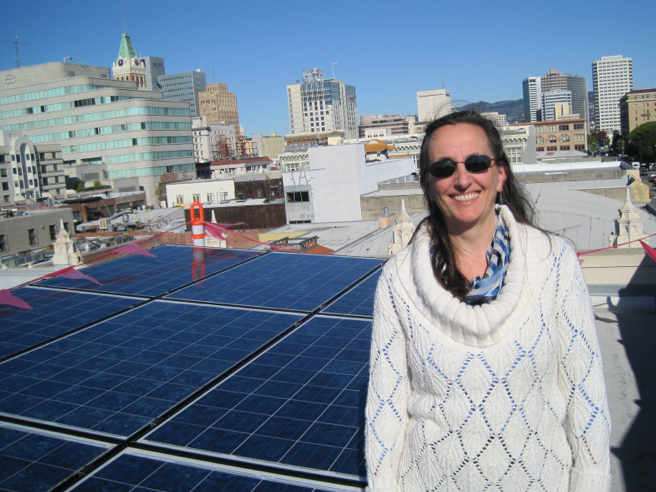
By Daniel Rosen and Billy Parish, co-founders of Mosaic
First and foremost, our thoughts and prayers go out to the families and communities devastated by Hurricane Sandy. We've seen the impacts of climate change in other parts of the world, but with Hurricane Sandy, we saw for the first time the places of our childhood underwater, family members without power. It is as shocking as it is frightening to see the devastation extreme weather can wreak.
We were deeply moved by pictures of firemen and nurses carrying babies in the dark from NYU Hospital out of harms way. Seeing them in action, we were filled with a fierce pride in humanity. When it comes down to it, in moments like these, we rise to extraordinary levels of bravery and sheer force of will.
But we're also left feeling angry. The irony that the same energy system that brought us climate change and this tremendous storm also couldn't handle its wrath makes us sick.
Let's not mince words: The fossil fuel industry is destroying our planet and everything that we love. CO2 in the atmosphere is making our oceans warmer and making our climate unstable. The current energy system is not only bad for the planet, but also is extremely fragile. In the wake of Hurricane Sandy, 12 million people went without power for days. Many of them are still without power today.
The gravity of the situation is real. Everything is at stake. Families. Homes. Memories. Whole ways of life. All packaged up neatly and for sale to the highest bidding lobbyist. The fossil fuel industry has spent $153 million on this election so far. It's no wonder climate change didn't come up once in the three presidential debates or the VP debate.
Meanwhile, the expected costs of Sandy are upwards of $50 billion. Will Exxon and Shell pay for that out of their $54 billion in profits this year? Will ConEd? Will PG&E? And what about the wildfires this summer? And the droughts across the midwest that have destroyed corn crops and farmers' livelihoods? What about those costs? Is there math that they have that figures out the value of lives lost in the hurricane? It's disgusting to even write that, but it begs the question.
So after the storm, what?
An Ambitious Proposal
Like the firefighters who risked their lives, we of all creeds, all ages and all political stripes must come together and work with the same tireless strength and courage to replace CO2-producing energy sources with clean energy and smart grid technologies. A world powered 100 percent with clean energy. If you don't think it's possible, watch this talk by actor and activist Mark Ruffalo, Stanford engineer Mark Jacobson and Executive Vice President of Rabo Bank Marco Kraepels.
Jacobson's team has mapped out how New York can make a total transition to clean energy by 2030. Under this plan, electricity would come from a mix of renewables and energy efficiency, reducing statewide power demand by 37 percent. And talk about collateral benefits: Air pollution mortality would decline by 4,000 deaths a year. Just the cost savings from reduced air pollution would save the Empire State $33B a year, enough to pay for the needed new 271 gigawatts of renewable power.
Take Jacobson's plan national and there you have it -- clean energy delivered via thousands of decentralized microgrids. It will take planning, coordination and financing by the whole crazy lot of us, from the clean tech sector to utilities to Mosaic investors crowdfunding the next distributed solar power plant. It will take an unprecedented coalition of people and businesses mobilized to make this ambitious vision happen.
ConEd is saying that it will take 10 days to get the majority of its customers their power back, but some may be without power until the end of November. In coming months, Cuomo and others could establish an aggressive state Feed In Tariff, guaranteeing a market for renewables. They could help to structure it to incentivize back-up storage. Each house could be a solar power plant. Every rooftop a place for distributed generation.
Distributed generation (such as wind and solar with backup battery storage) and other decentralized energies would have been far more resilient than our current electricity grid. The advantage of clean power microgrids, besides curbing climate change, is that if one mini-power station goes down, it doesn't take the whole grid down with it -- had NYU Hospital been microgrid-powered, we likely would not have witnessed the grim spectacle of firemen carrying those babies to safety.
Microgrids would offer protection in the inevitable event of future superstorms and in the face of powerful solar storms predicted for 2013 that have the potential to take down the entire US grid. Better still, clean energy would help avert extreme weather events in the first place.

One of Mosaic's projects in Oakland funded by 134 people.
The stormwaters have gone back to the sea. Now begins the real work of rebuilding. The task in front of us is the most ambitious rebuilding project human civilization has ever undertaken. This is not a top-down mandate. The task to transition from a CO2-based economy and energy production to 100 percent clean and renewable energy is a movement of movements, community of communities, network of networks.
We have the technology to make the transition. We have the know how. We have the people. We need not wait for another superstorm to underscore our vulnerability, and we need not -- must not -- wait for politicians and utility executives to lead the charge. As we say at Mosaic, we got this.